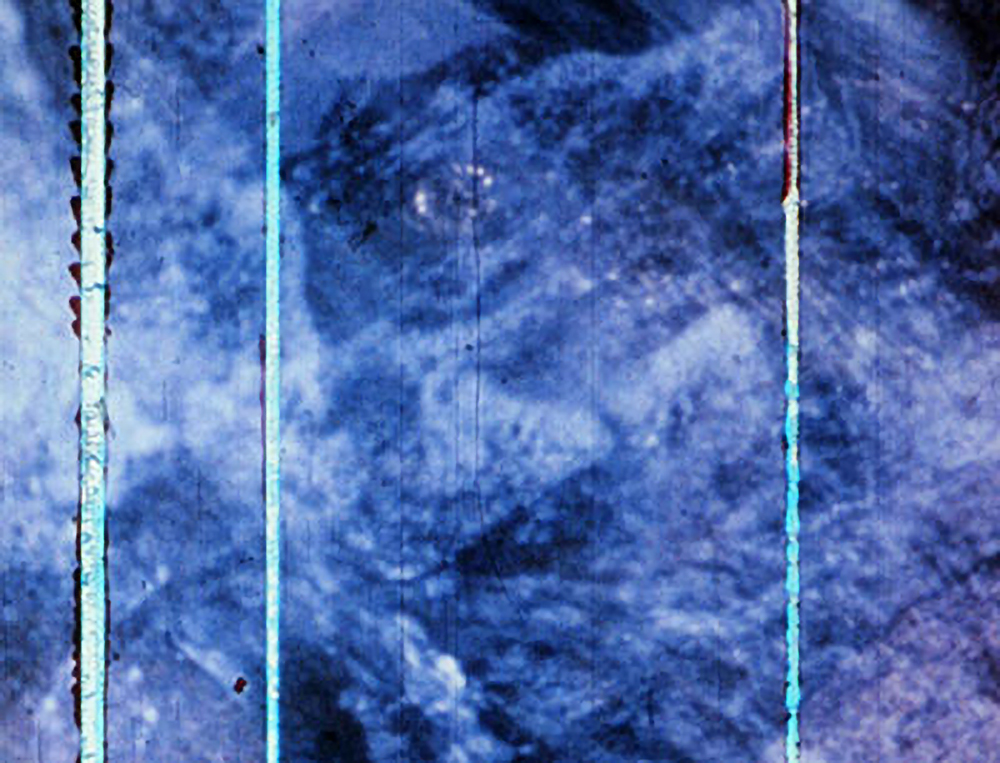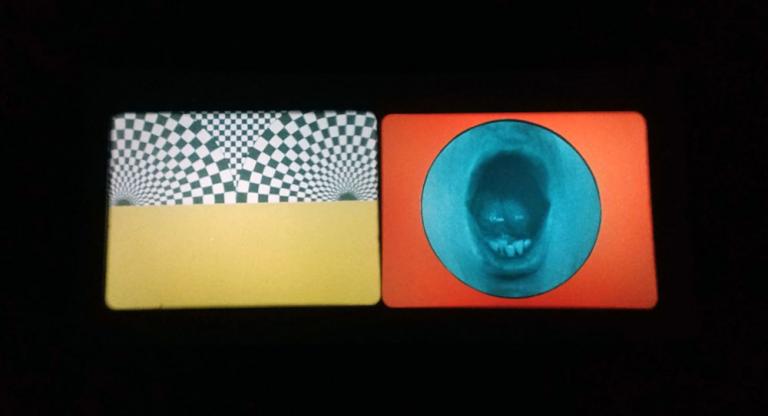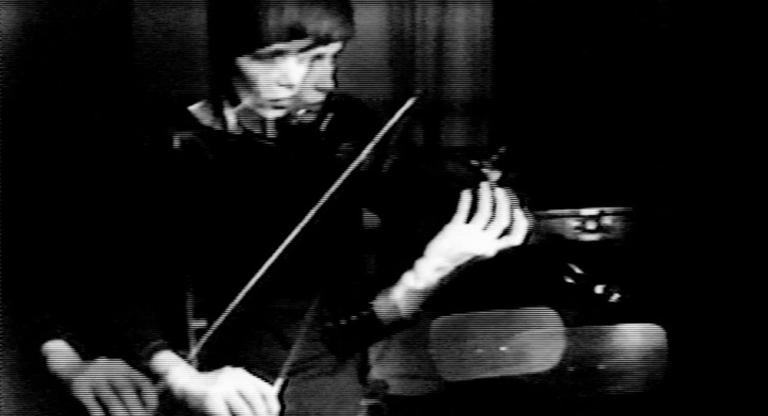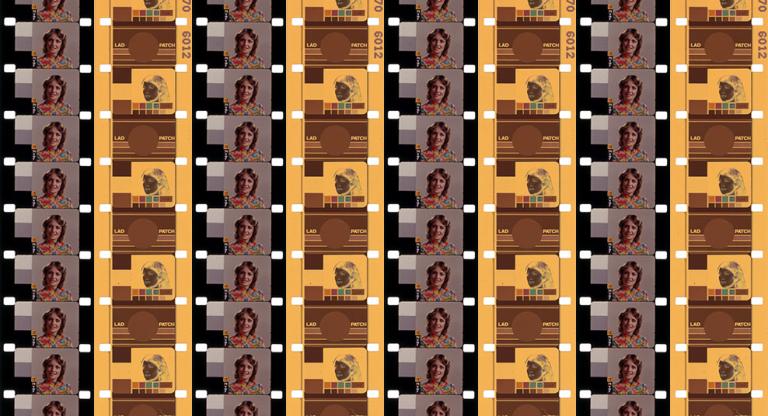“in the fall of 1968,” Paul Sharits writes in an essay from 1971, “i finished what i knew in advance would be my last ‘mandalic’ structured film (T,O,U,C,H,I,N,G) and that i was free at last to make works which would celebrate the life process rather than dramatize the anxieties of death; a vow–to work only out of joy. S:S:S:S:S:S would be the first work to flow along with(in) a reality larger than my own preoccupations.” Then, the unexpected: a “season in hell,” a death in the family, divorce a little while later, Sharits picking up and moving house at a rate verging toward the untenable, back and forth across the United States. The film took nearly three years to finalize. Still, Sharits: “i began thinking of film… as being a river, a flowing strip of emulsion currents.”
In S:TREAM:S:S:ECTION:S:ECTION:S:S:ECTIONED (1971), the cut is a creative act in which movement makes itself visible. Sharits stacks footage of rough waters, then begins to cut away at the celluloid, frame by frame, revealing ribbons of the projector’s naked light until that’s (almost) all there is. You imagine him bent over each frame, hair tucked behind his ears, all those months spent in cold attics and temporary spaces, without the help of automated tools, and yet the cut lets the light in. You begin thinking of film as a river. In a letter to Jonas Mekas in 1971, Sharits detailed how during early exhibitions of the film, he watched as viewer after viewer walked out; too long, too boring, perhaps, but his son Christopher liked it fine, so it stayed as it was. It was made for him, after all. It was made to be enjoyed. The dedication: “for my sun/light, Christopher: to filter our currents of tears thru grids of vibrating Joy.”
Some will tell you that a structural film is an exercise in style, or otherwise an effort to solve the logic problem behind the ontology of cinema. But what about a labor of love? A home movie? An attempt to realize a memory, to visualize (borrowing from Anne Carson) “that other day running underneath this one / like an old videotape”? Here, maybe, a structural film is something to make a child smile. PS: “christopher, i love you.” PS, to Christopher: “when we understand nature, we can be at least a little happier than we were when ‘Everything’ was a scary mystery/we will be with each other again & again, having fun, in our lives.”
S:TREAM:S:S:ECTION:S:ECTION:S:S:ECTIONED screens this evening, June 2, at Anthology Film Archives, on 16mm as part of “Essential Cinema: Paul Sharits.” It will be accompanied by COLOR SOUND FRAMES.






